A motorbike travelling at a constant speed turns at an intersection. The bike follows a horizontal circular path with a radius of 25 m as shown in the figure. At point O, the bike hits an area of ice and loses all frictional forces on its tyres. Which path does the bike follow on the ice?
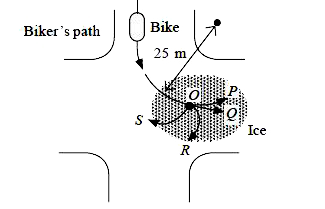
Along P
Along R
Along S
Along Q
The correct Answer is:D
Step by step video & image solution for A motorbike travelling at a constant speed turns at an intersection. The bike follows a horizontal circular path with a radius of 25 m as shown in the figure. At point O, the bike hits an area of ice and loses all frictional forces on its tyres. Which path does the bike follow on the ice? by Physics experts to help you in doubts & scoring excellent marks in Class 9 exams.
Updated on:21/07/2023Topper's Solved these Questions
- NSO QUESTION PAPER 2019 SET BBOOK - SCIENCE OLYMPIAD FOUNDATION CHAPTER - NSO QUESTION PAPER 2019 SET BEXERCISE - ACHIEVERS SECTION
1 Videos
- NSO QUESTION PAPER 2019 SET ABOOK - SCIENCE OLYMPIAD FOUNDATION CHAPTER - NSO QUESTION PAPER 2019 SET AEXERCISE - ACHIEVERS SECTION
2 Videos
- NSO QUESTION PAPER 2020 SET 1BOOK - SCIENCE OLYMPIAD FOUNDATION CHAPTER - NSO QUESTION PAPER 2020 SET 1EXERCISE - ACHIEVERS SECTION
2 Videos
Similar Questions
A particle of mass m moves with constant speed v on a circular path of radius r as shown in figure. The average force on it during its motion from A to B is
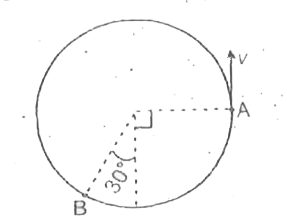
View SolutionA particle of mass m is moving with a constant speed v in a circular path in a smooth horizontal plate (plan of the paper ) by a spring force as shown in figure If the natural length of the spring is l0 and stiffeness of the spring is k find the elongation of the spring
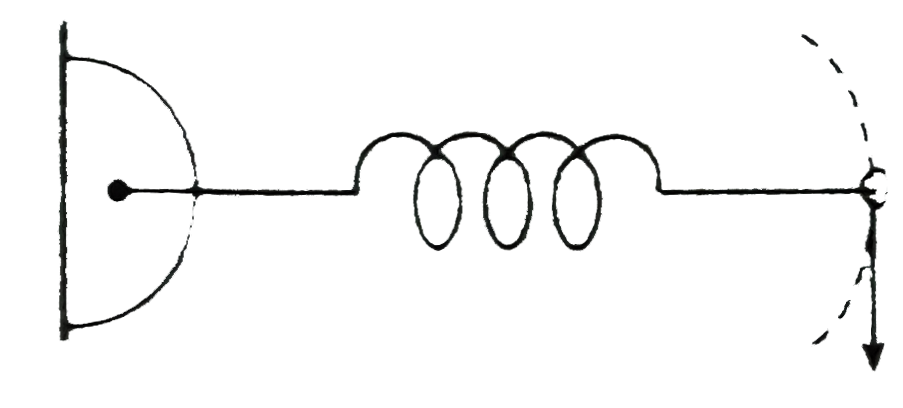
View Solution
Knowledge Check
A body of mass 'm' is moving with constant speed v on a track shown in figure. At point A and point B radius of curvature is R. NA,NB and NC represents normal reactions at A, B and C which of the following option is correct ?
ANA=mg−mv2RBNB=mg+mv2RCNC=mgDAll of theseA body of mass 'm' is moving with constant speed v on a track shown in figure. At point A and point B radius of curvature is R. NA,NB and NC represents normal reactions at A, B and C which of the following option is correct ?
ANA=mg−mv2RBNB=mg+mv2RCNC=mgDAll of theseA smooth horizontal fixed pipe is bent in the form of a vertical circle of radius 20m as shown in figure. A small glass ball is shown in horizontal portion of pipe at speed 30m/s as shown from end A. ( Take g=10m/s2)

Which of the following statement is / are correct :
(i) ball will not come out from eend B.
(ii) ball will come out from end B.
(iii) At point D speed of ball will be just more than zero.
(iv) (iv) At point E and C the ball will have same speed.Aonly (i)B(ii) and (iv)C(ii),(iii) and (iv)Donly (ii)
A toy car of mass m can travel at a fixed speed. It moves in circle on a fixed horizantal table. A string is connected to the car and attached to a block os mass M that hangs as shown in figure (the portion of string below the table is always vertical). The coefficient of friction between the surface of table and tyres of the toy car is μ. Find the ratio of the maximum radius to the minimum radius for which the toy car can move in a circular path with center O on table. (GivenM=3kg,m=2kg,μ=12)
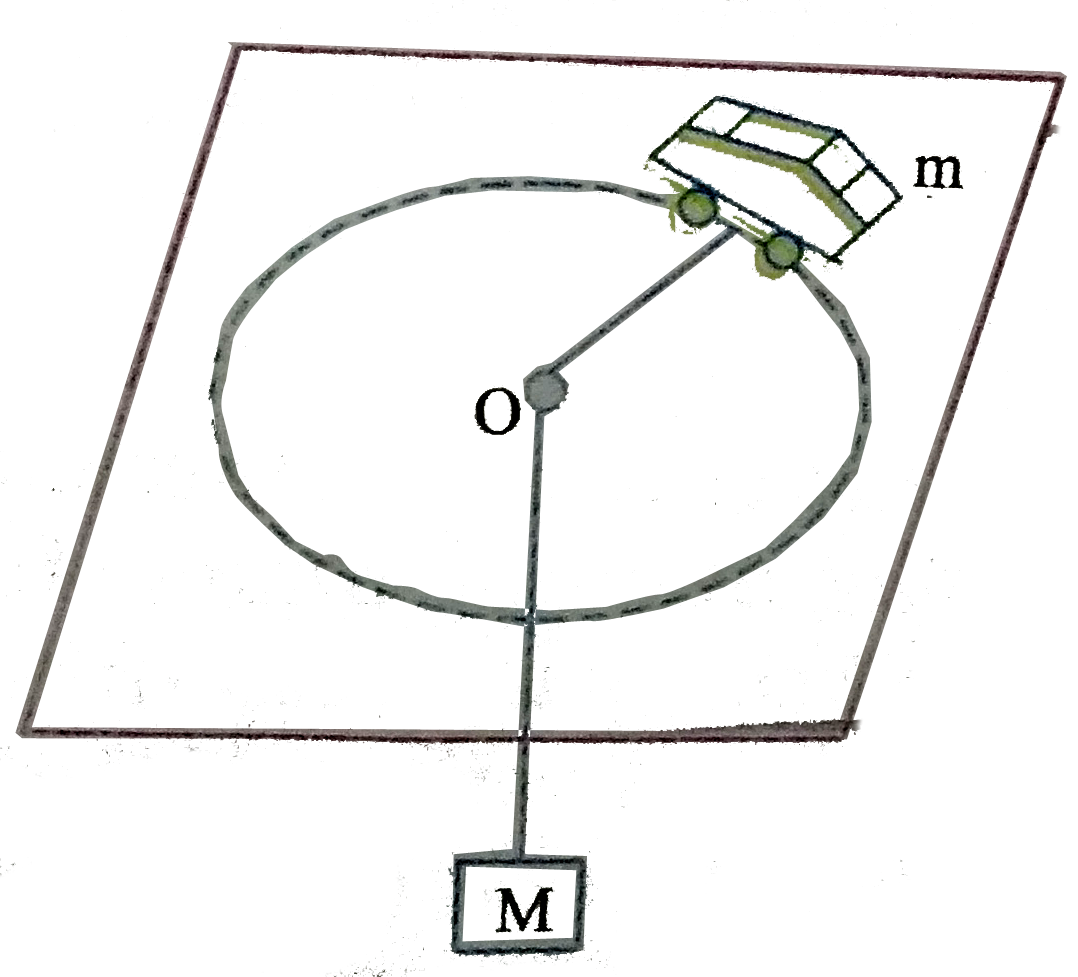
View SolutionA police jeep is chasing a culprit going on a motorbike. The motorbike crosses a turning at a speed of 72kmh−1. The jeep follows it at as peed of 108 kmh^-1, crossing the turning ten seconds later than the bike. Assuming that they travel at constant speeds, how far from the turning will the jeep catch up with the bike.
View SolutionBrake or turn? Figure depicts an overhead view of a car's path as the car travels toward a wall. Assume that the driver begins to brake the car when the distance to the wall is d=107 m, and take the car's mass a m=1400 kg, its initial speed as v0=35 m/s and the coefficient of static friction as μs=0.50. Assume that car's weight is distributed evenly on the four wheels, even during braking (a) What magnitude of static friction is needed (between tires and road) to stop the car just as it reaches the wall? (b) What is the maximum possible static friction fs,max/ (c) If the coefficient of kinetic frictic between the (sliding) tires and the road is μk=0.40, at what speed will the car hit the wall? To avoid the crash, a driver could elect to turn the car so that it just barely misses the wall, as shown in the figure. (d) What magnitude of frictional force would be required to keep the car in a circular path of radius d and at the given speed v0, so that the car moves is a quarter circle and then parallel to the wall? (e) Is the required force less than fs.max so that a circular path is possible?
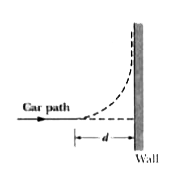
View SolutionA cyclist moves uniformaly on a horizontal circular track of radius 100 m . If the cofficient of friction is 0.1. At which of the following speed (s) can he travel without slipping
View SolutionA wheel is released on a rough horizontal floor after imparting it an initial horizontal velocity v0 and angular velocityω0 as shown in the figure below. Point O is the centre of mass of the wheel and point P is its instantaneous point of contact with the groundl. The radius of wheel is r and its radius of gyration about O is k. Coefficient of friction between wheel and ground is μ. A is a fixed point on the ground.
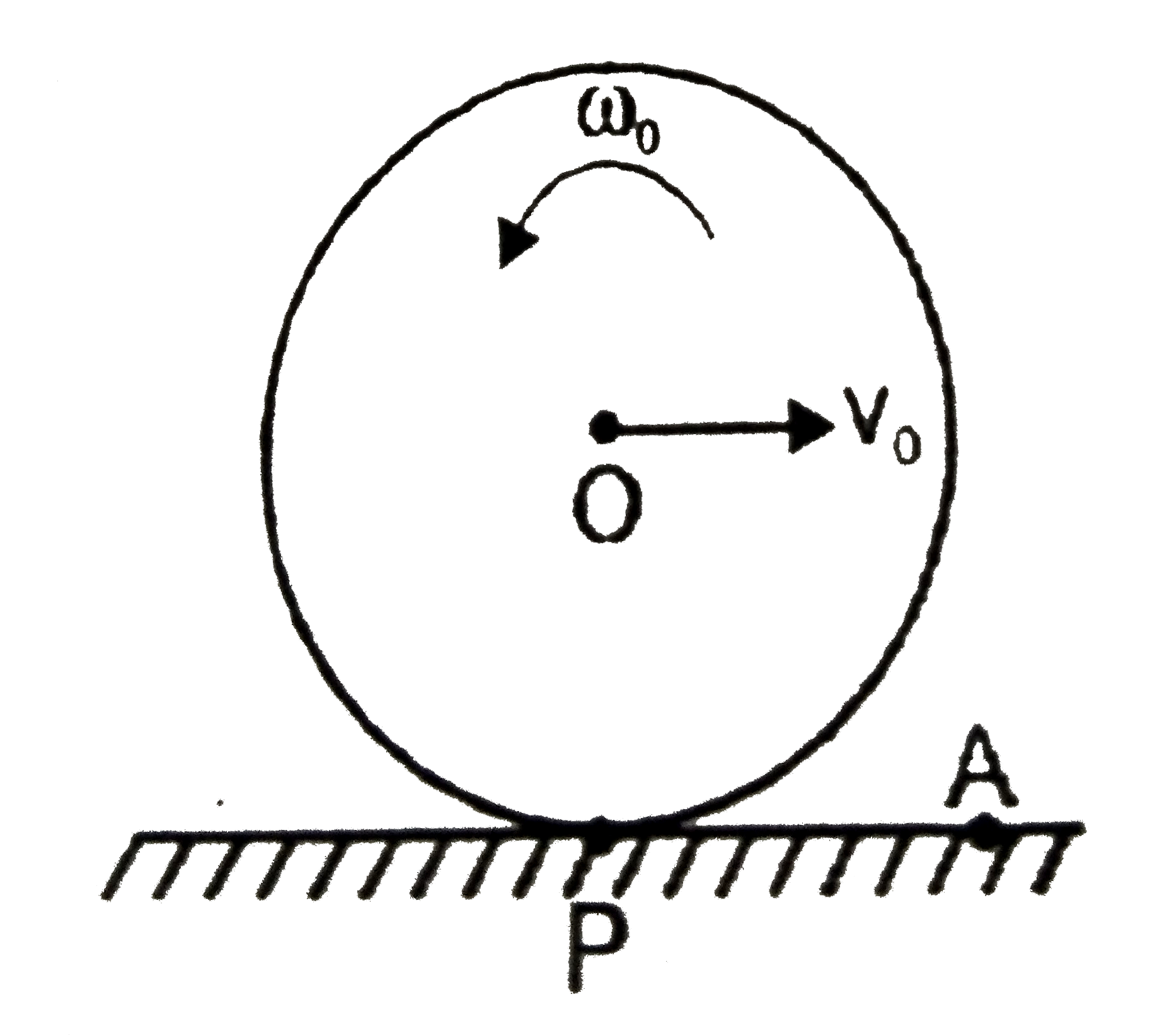
Which of the following is conserved ?
View Solution
